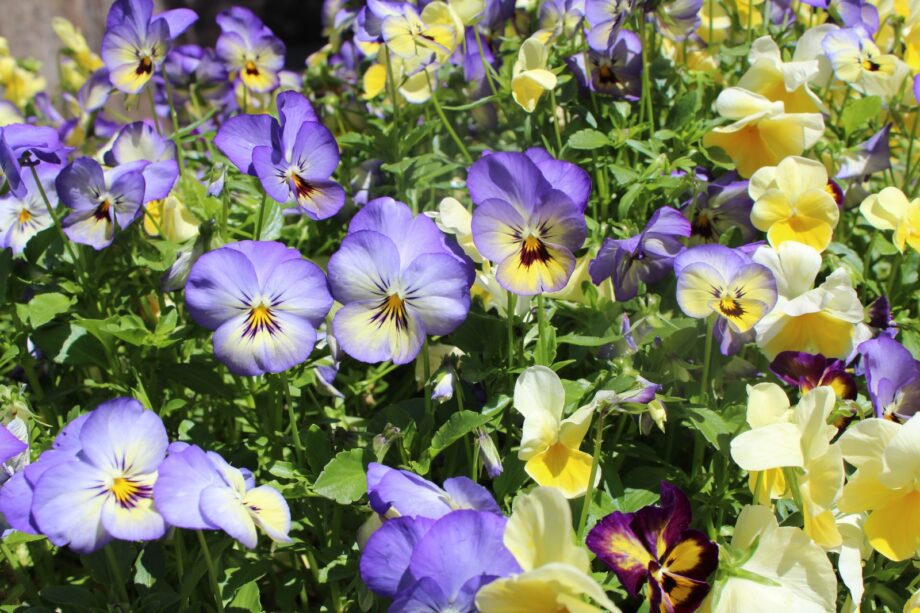Pansies are one of the most cheerful flowers you can grow in your garden. They are perfect for adding a splash of color in spring and fall, and they’re also one of the easiest flowers to grow. In this article, we’ll show you how to get started growing pansies in your garden!
What are the benefits of growing Pansy in your garden?
Pansy is a flower that is easy to grow and provides a splash of color in any garden. They are also relatively low maintenance, which makes them a great choice for beginner gardeners. Pansys come in a wide range of colors, so you can easily find one to match your garden’s color scheme.
What is the best time of the year to grow Pansy?
Pansy is a beautiful flower that can brighten up any garden. They are relatively easy to grow and don’t require much care. However, there is one important thing to keep in mind when growing pansies: the best time of year to plant them.
Pansies are cool weather flowers, which means they thrive in cooler temperatures. In most regions, the best time to plant pansies is in the fall, before the first frost. This gives the plants a chance to establish themselves before the winter sets in.
In warmer climates, pansies can be planted in early spring. However, they may not bloom as prolifically as they would in cooler temperatures. If you live in a warm climate and want your pansies to bloom their best, you may want to consider planting them in a shady spot that stays cool during the hottest part of the day.
How to grow and plant Pansy in your garden?
If you want to grow and plant pansies in your garden, there are a few things you should know. Pansy is a cool-season annual, which means it prefers cooler temperatures and can tolerate frost. It’s a good idea to start planting pansies in early spring, about six weeks before the last frost date in your area.
Pansy does best in full sun to partial shade and prefers well-drained soil. Be sure to add some compost or other organic matter to your soil before planting. To plant, dig a hole that’s large enough to accommodate the roots of your pansy plant. Gently loosen the roots and place the plant in the hole, then backfill with soil. Water well.
Once your pansy is planted, it doesn’t require a lot of care. Water when the soil is dry and fertilize every few weeks with a balanced fertilizer. Deadhead spent flowers regularly to encourage new blooms. With a little care, you’ll have beautiful pansies blooming in your garden all season long!
What varieties of Pansy are available
There are many different varieties of Pansy available on the market, so it is important to choose the right one for your home garden. Some popular varieties include the Johnnie Jump Up, the Swiss Giant, and the Alpine. Each variety has its own unique features, so be sure to do your research before making a purchase.
Tips to get better results while growing Pansy
If you are looking to grow pansies in your garden, there are a few tips that can help you get better results. First, choose a location that gets plenty of sunlight during the day. Pansy will do best in an area that receives at least six hours of direct sunlight each day.
Second, make sure you prepare the soil before planting by adding some organic matter to it. This will help the pansy roots to establish themselves more easily and also promote better drainage.
Third, when you plant the pansy, make sure to water it well and then apply a layer of mulch around the base of the plant. This will help to keep the soil moist and also protect the roots from extreme temperatures.
Fourth, once the pansy is established, you will need to deadhead the flowers regularly to encourage continued blooming. To do this, simply snip off the spent flowers at the base of the stem.
By following these simple tips, you can enjoy beautiful blooms from your pansy plants all season long!
Things you should avoid while growing Pansy
Pansies are one of the most beautiful and delicate flowers that you can grow in your garden. However, there are a few things that you should avoid if you want your pansies to thrive. Here are a few tips:
1. Avoid Overwatering – Pansies are very sensitive to overwatering and can easily become waterlogged. Stick to a strict watering schedule and only water when the soil is dry to the touch.
2. Avoid Fertilizing – Pansies don’t need a lot of fertilizer to thrive. In fact, too much fertilizer can actually damage their delicate roots. If you must fertilize, use a light hand and stick to organic options.
3. Avoid Pesticides – Pesticides can be very harmful to pansies (and other flowers). If pests become a problem, try using natural methods of control such as ladybugs or nematodes.
4. Avoid Excess Sunlight – Pansies prefer shady areas and too much sun can cause their leaves to scorch. If you live in a sunny climate, choose a spot in your garden that gets dappled sunlight or afternoon shade.
Types of insecticides to be used to protect them from pests
There are a few different types of insecticides that can be used to protect pansies from pests. One type is a systemic insecticide, which is absorbed by the plant and then circulated throughout its system. This type of insecticide is effective against chewing and sucking insects, such as aphids and whiteflies. Another type of insecticide is a contact insecticide, which only kills the insects that it comes into contact with. This type of insecticide is effective against crawling insects, such as caterpillars and beetles.
Conclusion
Pansies are one of the easiest flowers to grow in your garden and they make a beautiful addition to any landscape. With a little bit of care, you can have a stunning display of pansies in no time. We hope that our tips have helped you learn how to grow pansies in your garden and that you will enjoy their beauty for many seasons to come.

